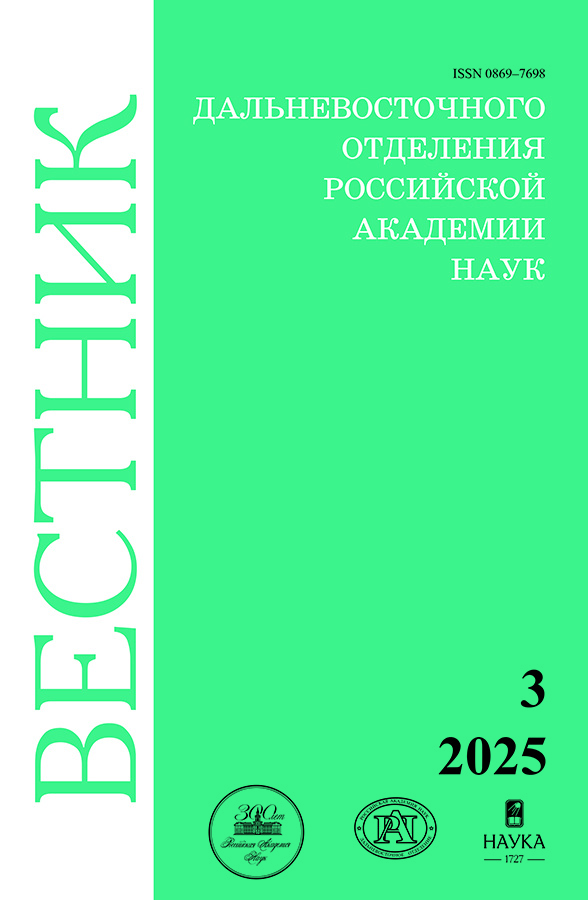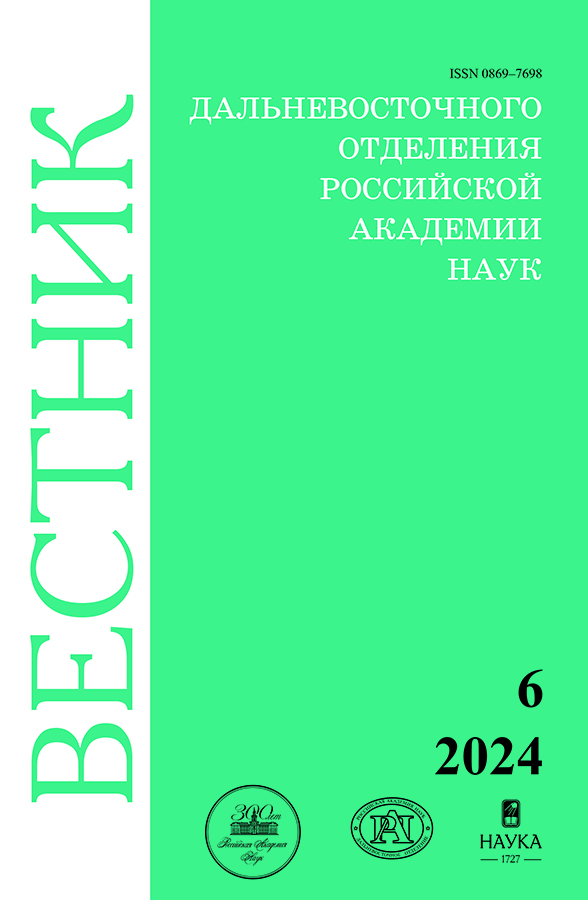Recent advances in the creation of antibacterial coatings on titanium materials based on the PEO method
- Authors: Nadaraia K.V.1, Imshinetskiy I.М.1, Mashtalyar D.V.1, Belov E.А.1, Piatkova М.A.1,2, Pleshkova A.I.1,2, Gerasimenko M.S.1,2, Sergienko S.L.1, Gnedenkov S.V.1, Sergienko V.I.1
-
Affiliations:
- Institute of Chemistry, FEB RAS
- Far Eastern Federal University
- Issue: No 6 (2024)
- Pages: 28-40
- Section: Chemical Sciences. Functional Coatings
- URL: https://modernonco.orscience.ru/0869-7698/article/view/677440
- DOI: https://doi.org/10.31857/S0869769824060035
- EDN: https://elibrary.ru/HSZMVM
- ID: 677440
Cite item
Full Text
Abstract
Currently, one of the significant problems associated with implant materials, including orthopedic metal implants, are implant-associated infections. This disease can lead not only to the need for systemic treatment, but also to repeated operations and, in the most negative cases, to death. One of the effective strategies to eliminate such infections is the creation of antibacterial surface layers. In recent years, the attention of researchers around the world has been focused on the creation of such structures. This review presents the results of the latest achievements in the field of plasma electrolytic synthesis of surface layers with a pronounced antibacterial effect. The main existing approaches to solving such problems are described, as well as their advantages and disadvantages, and future directions in this field are outlined.
Full Text
About the authors
K. V. Nadaraia
Institute of Chemistry, FEB RAS
Author for correspondence.
Email: nadaraiakv@mail.ru
ORCID iD: 0000-0001-7835-2231
Candidate of Sciences in Chemistry, Senior Researcher
Russian Federation, VladivostokI. М. Imshinetskiy
Institute of Chemistry, FEB RAS
Email: igorimshin@gmail.com
ORCID iD: 0000-0002-5055-1834
Candidate of Sciences in Chemistry, Senior Researcher
Russian Federation, VladivostokD. V. Mashtalyar
Institute of Chemistry, FEB RAS
Email: madiva@inbox.ru
ORCID iD: 0000-0001-9645-4936
Doctor of Sciences in Chemistry, Head of Laboratory
Russian Federation, VladivostokE. А. Belov
Institute of Chemistry, FEB RAS
Email: belov_eal@mail.ru
ORCID iD: 0000-0003-4854-1220
Junior Researcher
Russian Federation, VladivostokМ. A. Piatkova
Institute of Chemistry, FEB RAS; Far Eastern Federal University
Email: piatkova.mariia.al@gmail.com
ORCID iD: 0000-0002-1208-0947
Junior Researcher
Russian Federation, Vladivostok; VladivostokA. I. Pleshkova
Institute of Chemistry, FEB RAS; Far Eastern Federal University
Email: othariadna@gmail.com
ORCID iD: 0000-0002-4601-3232
Junior Researcher
Russian Federation, Vladivostok; VladivostokM. S. Gerasimenko
Institute of Chemistry, FEB RAS; Far Eastern Federal University
Email: gerasimenko.ms00@mail.ru
ORCID iD: 0009-0002-7887-6953
Engineer
Russian Federation, Vladivostok; VladivostokS. L. Sergienko
Institute of Chemistry, FEB RAS
Email: sls@ich.dvo.ru
ORCID iD: 0000-0002-0963-0557
Corresponding Member of RAS, Doctor of Sciences in Chemistry, Associate Professor
Russian Federation, VladivostokS. V. Gnedenkov
Institute of Chemistry, FEB RAS
Email: svg21@hotmail.com
ORCID iD: 0000-0003-1576-8680
Corresponding Member of RAS, Doctor of Sciences in Chemistry, Professor
Russian Federation, VladivostokV. I. Sergienko
Institute of Chemistry, FEB RAS
Email: sergienko@hq.febras.ru
ORCID iD: 0000-0002-0547-5545
Academician of RAS, Doctor of Sciences in Chemistry
Russian Federation, VladivostokReferences
- Marang-van de Mheen P.J., Bragan Turner E., Liew S. et al. Variation in Prosthetic Joint Infection and treatment strategies during 4.5 years of follow-up after primary joint arthroplasty using administrative data of 41397 patients across Australian, European and United States hospitals. BMC Musculoskelet Disord. 2017;18:207.
- Darouiche R.O. Treatment of Infections Associated with Surgical Implants. New England Journal of Medicine. 2004;350:1422–1429.
- Kurtz S.M., Lau E., Watson H. et al. Economic Burden of Periprosthetic Joint Infection in the United States. J. Arthroplasty. 2012;27:61–65.e1.
- Beam E., Osmon D. Prosthetic Joint Infection Update. Infect Dis Clin North Am. 2018;32:843–859.
- Miller R., Higuera C.A., Wu J. et al. Periprosthetic Joint Infection. JBJS Rev. 2020;8:e19.00224–e19.00224.
- Doymus B., Kerem G., Yazgan Karatas A. et al. A functional coating to enhance antibacterial and bioactivity properties of titanium implants and its performance in vitro. J. Biomater. Appl. 2021;35:655–669.
- Cui M., Pan H., Li L. et al. Exploration and Preparation of Patient-specific Ciprofloxacin Implants Drug Delivery System Via 3D Printing Technologies. J. Pharm. Sci. 2021;110:3678–3689.
- Imshinetskiy I., Kashepa V., Nadaria K. et al. Bioactive PEO Coatings Containing Ta2O5 Formed on Mg-Mn-Ce Alloy. In: 2023 IEEE Ural-Siberian Conference on Biomedical Engineering, Radioelectronics and Information Technology (USBEREIT). IEEE; 2023. P. 005–008.
- Zhou J., Wang X. The osteogenic, anti-oncogenic and antibacterial activities of selenium-doped titanium dioxide coatings on titanium. Surf. Coat Technol. 2020;403:126408.
- Mashtalyar D.V., Nadaraia K.V., Plekhova N.G. et al. Antibacterial Ca/P-coatings formed on Mg alloy using plasma electrolytic oxidation and antibiotic impregnation. Mater. Lett. 2022;317:132099.
- Du M., Huang L., Peng M. et al. Preparation of vancomycin-loaded alginate hydrogel coating on magnesium alloy with enhanced anticorrosion and antibacterial properties. Thin Solid Films. 2020;693:137679.
- Sopchenski L., Cogo S., Dias-Ntipanyj M.F. et al. Bioactive and antibacterial boron doped TiO2 coating obtained by PEO. Appl. Surf. Sci. 2018;458:49–58.
- Nielsen F.H. Update on human health effects of boron. Journal of Trace Elements in Medicine and Biology. 2014;28:383–387.
- Bolan S., Wijesekara H., Amarasiri D. et al. Boron contamination and its risk management in terrestrial and aquatic environmental settings. Science of The Total Environment. 2023;894:164744.
- Zhang B., Li B., Gao S. et al. Y-doped TiO2 coating with superior bioactivity and antibacterial property prepared via plasma electrolytic oxidation. Mater. Des. 2020;192:108758.
- Pavarini M., Moscatelli M., Candiani G. et al. Influence of frequency and duty cycle on the properties of antibacterial borate-based PEO coatings on titanium for bone-contact applications. Appl. Surf. Sci. 2021;567:150811.
- Wang X., Wang W.-X. Cu-based nanoparticle toxicity to zebrafish cells regulated by cellular discharges. Environmental Pollution. 2022;292:118296.
- Zhang X. et al. Microstructure, corrosion resistance, osteogenic activity and antibacterial capability of Mn-incorporated TiO2 coating. Appl. Surf. Sci. 2020;531:147399.
- Pourshadloo M., Jameel M.F., Romero-Parra R.M. et al. Synthesis of TiO2/rGO composite coatings on titanium alloys with enhanced anticorrosion performance in palmitic acid-incorporated physiological solutions. Ceram. Int. 2023;49:33598–33606.
- Guo Z., Yang Z., Chen Y. et al. One-step plasma electrolytic oxidation with Graphene oxide for Ultra-low porosity Corrosion-resistant TiO2 coatings. Appl. Surf. Sci. 2022;594:153477.
- Manojkumar P., Lokeshkumar E., Premchand C. et al. Facile preparation of immobilised visible light active W–TiO2/rGO composite photocatalyst by plasma electrolytic oxidation process. Physica B Condens Matter. 2022;631:413680.
- Hummers W.S., Offeman R.E. Preparation of Graphitic Oxide. J. Am. Chem. Soc. 1958;80:1339–1339.
- Mazinani A., Nine M.J., Chiesa R. et al. Graphene oxide (GO) decorated on multi-structured porous titania fabricated by plasma electrolytic oxidation (PEO) for enhanced antibacterial performance. Mater. Des. 2021;200:109443.
- San H., Paresoglou M., Minneboo M. et al. Fighting Antibiotic-Resistant Bacterial Infections by Surface Biofunctionalization of 3D-Printed Porous Titanium Implants with Reduced Graphene Oxide and Silver Nanoparticles. Int. J. Mol. Sci. 2022;23:9204.
- Sun N., Yin S., Lu Y. et al. Graphene oxide-coated porous titanium for pulp sealing: an antibacterial and dentino-inductive restorative material. J. Mater. Chem. B. 2020;8:5606–5619.
- Chai M.-Z., An M.-W., Zhang X.-Y. et al. In vitro and in vivo antibacterial activity of graphene oxide-modified porous TiO2 coatings under 808-nm light irradiation. Rare Metals. 2022;41:540–545.
- Liu S., Xia C., Liu Z. et al. Micro-arc oxidation preparation of a ZnO-Se composite coating on titanium with anti-oxidation and anti-bacterial potentials for osteomyelitis control. Mater. Lett. 2022;327:132978.
- Chopra I. The increasing use of silver-based products as antimicrobial agents: a useful development or a cause for concern? Journal of Antimicrobial Chemotherapy. 2007;59:587–590.
- Rai M., Yadav A., Gade A. Silver nanoparticles as a new generation of antimicrobials. Biotechnol. Adv. 2009;27:76–83.
- Ponomarev V.A., Orlov E.A., Malikov N.A. et al. Ag(Pt) nanoparticles-decorated bioactive yet antibacterial Ca- and P-doped TiO2 coatings produced by plasma electrolytic oxidation and ion implantation. Appl. Surf. Sci. 2020;516:146068.
- Shin K.R., Kim Y.S., Kim G.W. et al. Effects of concentration of Ag nanoparticles on surface structure and in vitro biological responses of oxide layer on pure titanium via plasma electrolytic oxidation. Appl. Surf. Sci. 2015;347:574–582.
- Muhaffel F., Cempura G., Menekse M. et al. Characteristics of multi-layer coatings synthesized on Ti6Al4V alloy by micro-arc oxidation in silver nitrate added electrolytes. Surf. Coat. Technol. 2016;307:308–315.
- Mijnendonckx K., Leys N., Mahillon J. et al. Antimicrobial silver: uses, toxicity and potential for resistance. BioMetals. 2013;26:609–621.
- Van Hengel I.A.J. et al. Self-defending additively manufactured bone implants bearing silver and copper nanoparticles. J. Mater. Chem. B. 2020;8:1589–1602.
- Yao X., Zhang X., Wu H. et al. Microstructure and antibacterial properties of Cu-doped TiO2 coating on titanium by micro-arc oxidation. Appl. Surf. Sci. 2014;292:944–947.
- Jomova K., Valko M. Advances in metal-induced oxidative stress and human disease. Toxicology. 2011;283:65–87.
- Leśniak-Ziółkowska K., Kazek-Kęsik A., Rokosz K. et al. Electrochemical modification of the Ti-15Mo alloy surface in solutions containing ZnO and Zn3(PO4)2 particles. Materials Science and Engineering: C. 2020;115:111098.
- Roknian M. et al. Study of the effect of ZnO nanoparticles addition to PEO coatings on pure titanium substrate: Microstructural analysis, antibacterial effect and corrosion behavior of coatings in Ringer’s physiological solution. J. Alloys. Compd. 2018;740:330–345.
- Nadimi M., Dehghanian C. Incorporation of ZnO–ZrO2 nanoparticles into TiO2 coatings obtained by PEO on Ti–6Al–4V substrate and evaluation of its corrosion behavior, microstructural and antibacterial effects exposed to SBF solution. Ceram. Int. 2021;47:33413–33425.
- Nikoomanzari E. et al. Effect of ZrO2 nanoparticles addition to PEO coatings on Ti–6Al–4V substrate: Microstructural analysis, corrosion behavior and antibacterial effect of coatings in Hank’s physiological solution. Ceram. Int. 2020;46:13114–13124.
- Molaei M. et al. Enhancing cytocompatibility, antibacterial activity and corrosion resistance of PEO coatings on titanium using incorporated ZrO2 nanoparticles. Surfaces and Interfaces. 2022;30:101967.
- Zhao D. et al. Antifouling properties of micro arc oxidation coatings containing Cu2O/ZnO nanoparticles on Ti6Al4V. Int. J. Refract. Metals Hard Mater. 2016;54:417–421.
- Du Q. et al. The effect of applied voltages on the structure, apatite-inducing ability and antibacterial ability of micro arc oxidation coating formed on titanium surface. Bioact. Mater. 2018;3:426–433.
- Huang H.-L. et al. Antibacterial and biological characteristics of tantalum oxide coated titanium pretreated by plasma electrolytic oxidation. Thin Solid Films. 2019;688:137268.
- Chang Y.-Y. et al. Antibacterial properties and cytocompatibility of tantalum oxide coatings. Surf. Coat Technol. 2014;259:193–198.
- Zhu Y. et al. Bacterial and mammalian cells adhesion to tantalum-decorated micro-/nano-structured titanium. J. Biomed. Mater. Res. A. 2017;105:871–878.
- Meidanchi A., Jafari A. Synthesis and characterization of high purity Ta2O5 nanoparticles by laser ablation and its antibacterial properties. Opt. Laser Technol. 2019;111:89–94.
- Wang F. et al. Simultaneous incorporation of gallium oxide and tantalum microparticles into micro-arc oxidation coating of titanium possessing antibacterial effect and stimulating cellular response. Biomaterials Advances. 2022;135:212736.
Supplementary files






